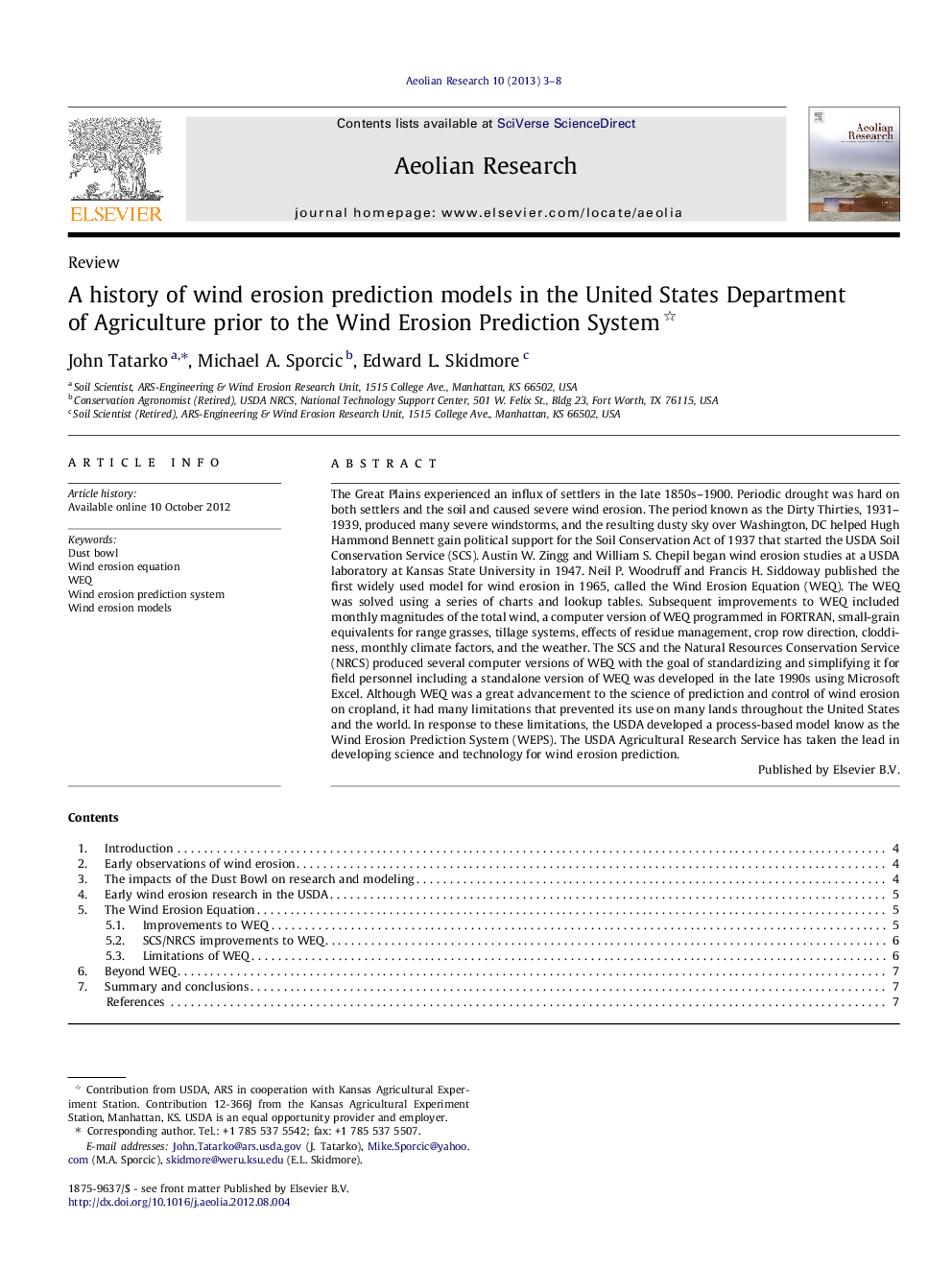| Article ID | Journal | Published Year | Pages | File Type |
|---|---|---|---|---|
| 4673813 | Aeolian Research | 2013 | 6 Pages |
The Great Plains experienced an influx of settlers in the late 1850s–1900. Periodic drought was hard on both settlers and the soil and caused severe wind erosion. The period known as the Dirty Thirties, 1931–1939, produced many severe windstorms, and the resulting dusty sky over Washington, DC helped Hugh Hammond Bennett gain political support for the Soil Conservation Act of 1937 that started the USDA Soil Conservation Service (SCS). Austin W. Zingg and William S. Chepil began wind erosion studies at a USDA laboratory at Kansas State University in 1947. Neil P. Woodruff and Francis H. Siddoway published the first widely used model for wind erosion in 1965, called the Wind Erosion Equation (WEQ). The WEQ was solved using a series of charts and lookup tables. Subsequent improvements to WEQ included monthly magnitudes of the total wind, a computer version of WEQ programmed in FORTRAN, small-grain equivalents for range grasses, tillage systems, effects of residue management, crop row direction, cloddiness, monthly climate factors, and the weather. The SCS and the Natural Resources Conservation Service (NRCS) produced several computer versions of WEQ with the goal of standardizing and simplifying it for field personnel including a standalone version of WEQ was developed in the late 1990s using Microsoft Excel. Although WEQ was a great advancement to the science of prediction and control of wind erosion on cropland, it had many limitations that prevented its use on many lands throughout the United States and the world. In response to these limitations, the USDA developed a process-based model know as the Wind Erosion Prediction System (WEPS). The USDA Agricultural Research Service has taken the lead in developing science and technology for wind erosion prediction.
► The Dust Bowl period of the 1930s in the US, resulted in an intense interest in developing soil conservation in the US. ► The Wind Erosion Equation was the first attempt to model wind erosion on agricultural fields. ► Continued research by the USDA has improved wind erosion prediction models developed by the USDA.
